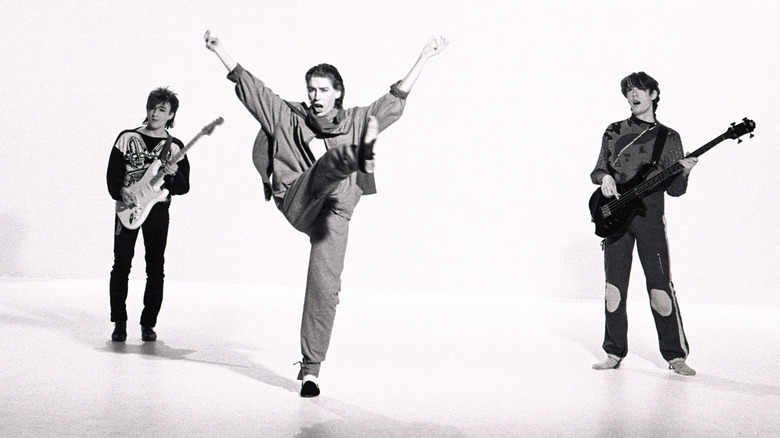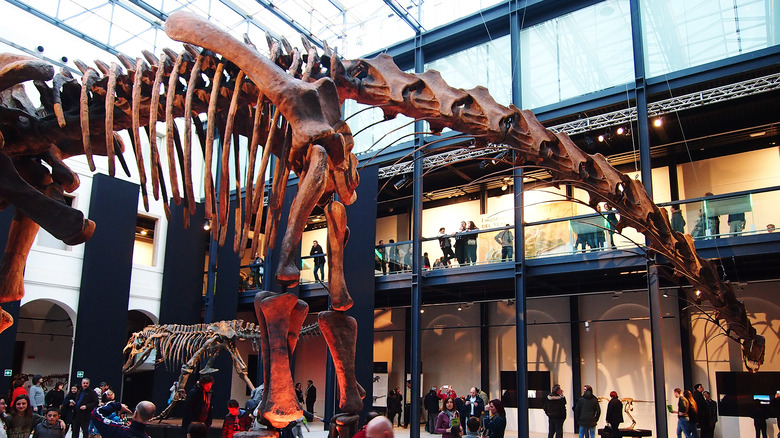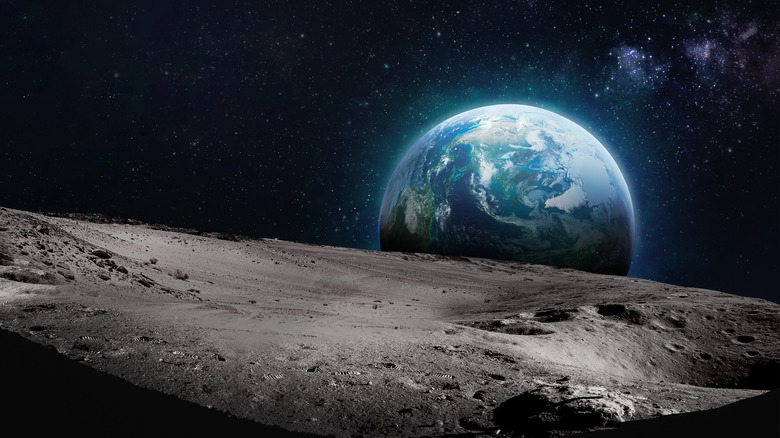
Here’s How Much Godzilla Would Weigh According To Scientists
Japanese monster Godzilla first appeared on screen in 1954. The mastermind behind the movie was director Ishiro Honda, who used the movie as a medium to talk about nuclear fallout and wartime destruction, a very appropriate conversation for a country still reeling from the WWII nuclear bomb attack (via Criterion). So when the first Godzilla rose from the waters of Tokyo Bay to attack the city in 1954, he was not just a giant reptile, but a war metaphor.
Radioactive Godzilla (which dies at the end of the first movie) became an instant hit and has appeared in 36 films since then (both in the U.S. and Japan), according to Collider. Throughout the years, Godzilla has gone through many transformations. He’s gotten bigger, taller, heavier, and more violent as new movies get released.
Godzilla — known in Japanese as “gorira,” a compound word of gorilla and whale — has also changed in appearance. Originally he looked very much like some sort of dinosaur, complete with small arms (reminiscent of a T-Rex), powerful tail, and reptilian skin. In 1995’s “Godzilla vs. Destoroyah” Godzilla was even given a heart that’s similar to a sort of nuclear reactor (per Ranker). Over the next few decades, Godzilla gained more weight, more height, and a much meaner face.
Building a bigger, more powerful monster
New versions of Godzilla have grown in every possible way, and one of the most obvious is height. The original Godzilla in 1954 was said to be approximately 164 feet tall, but by 1984 the monster had grown to be 262 feet tall. Ten years later, for the movie “Godzilla Vs. SpaceGodzilla,” Godzilla was said to measure 328 feet tall. When Godzilla returned to Hollywood in 2014 the creature had become a truly massive 492 feet in height, according to Ranker. While there are many reasons why directors keep making Godzilla bigger and badder, an important one is that skyscrapers in both Japan and in the American cities Godzilla attacks are also getting bigger. In order for Godzilla to still appear terrifying, he must keep getting bigger to keep up with the architecture (via Vox).
To get a better idea of just how big Godzilla is, we can try to compare it with the biggest animals on Earth. The largest animal currently alive is the blue whale, at about 100 feet long. Then there’s Argentinosaurus, possibly the largest dinosaur ever to exist. Paleontologists believe it was about 70 feet tall and 115 feet long (per Popular Mechanics). Compared to Godzilla, still not that very impressive. Still, at almost 500 feet tall, Godzilla is almost as tall as the Washington Monument (which is 555 feet tall) and taller than the Great Pyramid of Giza (which stands at 430 feet), according to The Measure of Things.
Movie Godzilla is so heavy, he couldn't exist in real life
With the problem of height comes another issue: Godzilla is also very, very heavy. According to Popular Mechanics, the monster’s heart alone weighs about 100 tons. Paleontologists use a specific formula to determine the height of dinosaurs. They multiply the number 0.00016 by the circumference of the femur. Using this formula, Popular Mechanics determines that Godzilla could potentially weigh 163,772 tons.
This truly gigantic number raises some other questions. According to Smithsonian Magazine, height is directly related to bone density and muscle size. As a result, there’s actually a limit to how big a land animal can get before its bones can no longer support its weight, resulting in the skeleton simply shattering. Even Argentinosaurus “only” weighed 100 tons, or about as much as just Godzilla’s heart (via SyFy).
And 100 tons is about the maximum weight any land animal could safely get to. For an animal like the Argentinosaurus (pictured here), this would have already been a struggle, but at least the giant walked on four legs. Godzilla, on the other hand, would have to carry its entire weight in just two legs. The rules are slightly different for marine animals, as the water provides support, so there’s no such pressure on the skeletons; whales, for example, can easily reach 200 tons, according to Smithsonian Magazine. Scientifically speaking, at least, Godzilla just cannot be that large. Except, of course, on the screen.

Day Of The Dead Myths You Should Definitely Stop Believing

The Untold Truth Of The Psychedelic Furs

What Was Norm Macdonald's Net Worth When He Died?

Deadliest Plants In The World

36% Of People Wish They Could Have Seen This Iconic Concert

What You Should Know About The Royal Pets

The Untold Truth Of Joni Mitchell

The Tragic Death Of John Entwistle

The Tragic Real-Life Story Of Leif Garrett

The Iconic Band Over 40% Of People Would Want To Be A Part Of
























